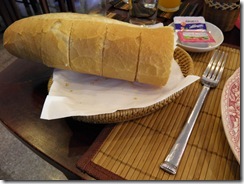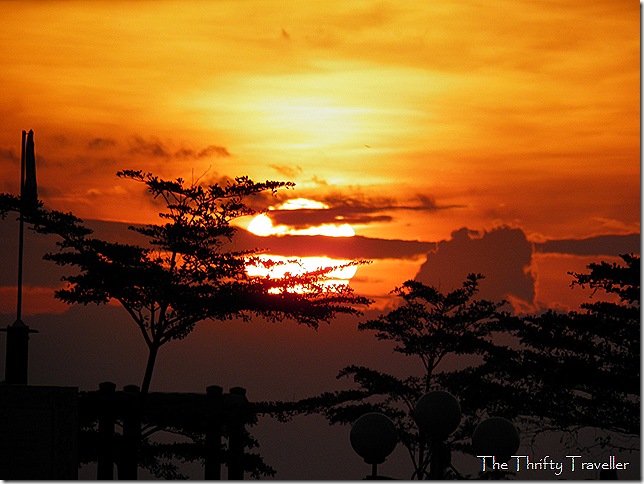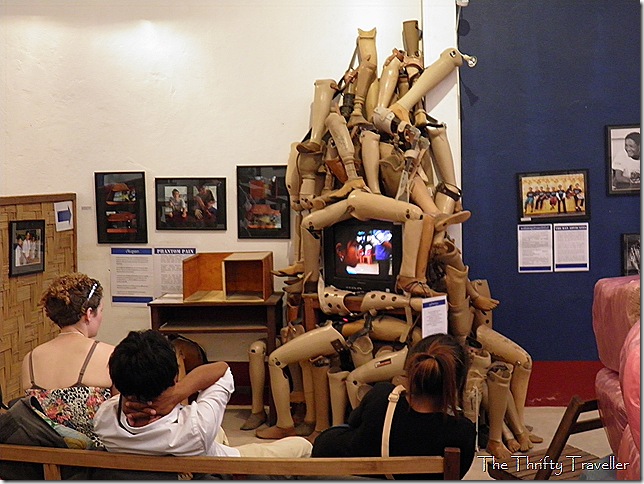
 My eldest son and I have just returned from a short break in Vientiane, the capital of Laos. This is the fourth such trip we have made together in recent years, the previous excursions being to Kathmandu, Rangoon and Siem Reap. My son calls them ‘Daddy’s Dysentery Tours’ because he was attacked by Delhi Belly in both Burma and Cambodia. Fortunately he had no stomach problems this time.
My eldest son and I have just returned from a short break in Vientiane, the capital of Laos. This is the fourth such trip we have made together in recent years, the previous excursions being to Kathmandu, Rangoon and Siem Reap. My son calls them ‘Daddy’s Dysentery Tours’ because he was attacked by Delhi Belly in both Burma and Cambodia. Fortunately he had no stomach problems this time.
A three day visit is inadequate to do justice to a country as large as Laos but it is more than ample time to see all the tourist attractions of Vientiane, which is quite a small city of around 250,000 people.


We stayed at the Vayakorn Inn which is centrally located, comfortable and good value at US$35 per night (breakfast was $4 extra). They keep the wooden floors shiny and unscuffed by insisting that all guests take off their shoes and leave them on racks in the lobby.
A sign in the room reads ‘please be aware that accompanying any local joiner into your room is illegal and against Lao PDR law.’ Not sure what they’ve got against carpenters!
My only criticism of the room was the duvet which must have been 15 tog and more suitable for a Siberian winter than a sultry Laotian evening.

Laos was once a French colony and their influence can still be found in the food (baguettes, charcuterie, good coffee), some of the older colonial architecture and in the street name signs (e.g. Rue Mahosot). There also seem to be quite a few French and other Europeans living in Vientiane and running restaurants for the hordes of western tourists. The foreign tourists mostly fall into two categories: young backpackers on the South-East Asian adventure circuit or middle aged, well-heeled types looking for an exotic cultural experience. Few spend much time in Vientiane, preferring to move on to more atmospheric towns like Luang Prabang.


Most tourists get around by tuk-tuk, rented bicycles or on foot. By Asian standards the streets are quiet and traffic-free and this is one few capitals in this part of the world where cycling is relatively safe.


The Presidential Palace is one of the city’s landmarks. It was once an elegant French villa but has been progressively extended and embellished to its current appearance. The Lao National Museum covers the country’s prehistory up until the present day. Most space is given over to their struggles against the French and the Americans and the period since 1975 when the Communists took over.

One of the city’s more recognisable landmarks is the Vientiane Monument, also known as the Anousavari Monument, which looks like an oriental version of the Arc du Triomphe. The signboard below is very self-effacing. I think they are being rather harsh on themselves. Or perhaps they just copied the English text from a guide book without realising that the wording is a little insulting.

The roof structure contains three levels of souvenir shops.


The main attractions in Vientiane are the Buddhist temples and we visited at least a dozen of them.

Although many of the temples look ancient they are not that old because most of Vientiane’s temples were burnt to the ground during the Siamese invasion of 1828 (which was not very neighbourly of the Thais). Only Wat Sisaket survived intact and is therefore the oldest.







A young Lao couple were posing for their wedding photos in national dress at Wat Sisaket.

The other things to do and see in Vientiane include shopping at the night market and the morning market, and trying out some of the many decent restaurants.


Lao beer is very reasonably priced and comes in a few varieties. A popular place to sample it is on the terraces of the cafes next to the River Mekong which enjoy good sunset views.

We enjoyed our stay. If I had to chose between Siem Reap (Cambodia) and Vientiane, which are similar in many ways, I think Siem Reap has a slight edge due to better shopping, better restaurants and of course having Angkor Wat on its doorstep. But on the other hand, Vientiane did not have the delhi belly!

Like this:
Like Loading...





































